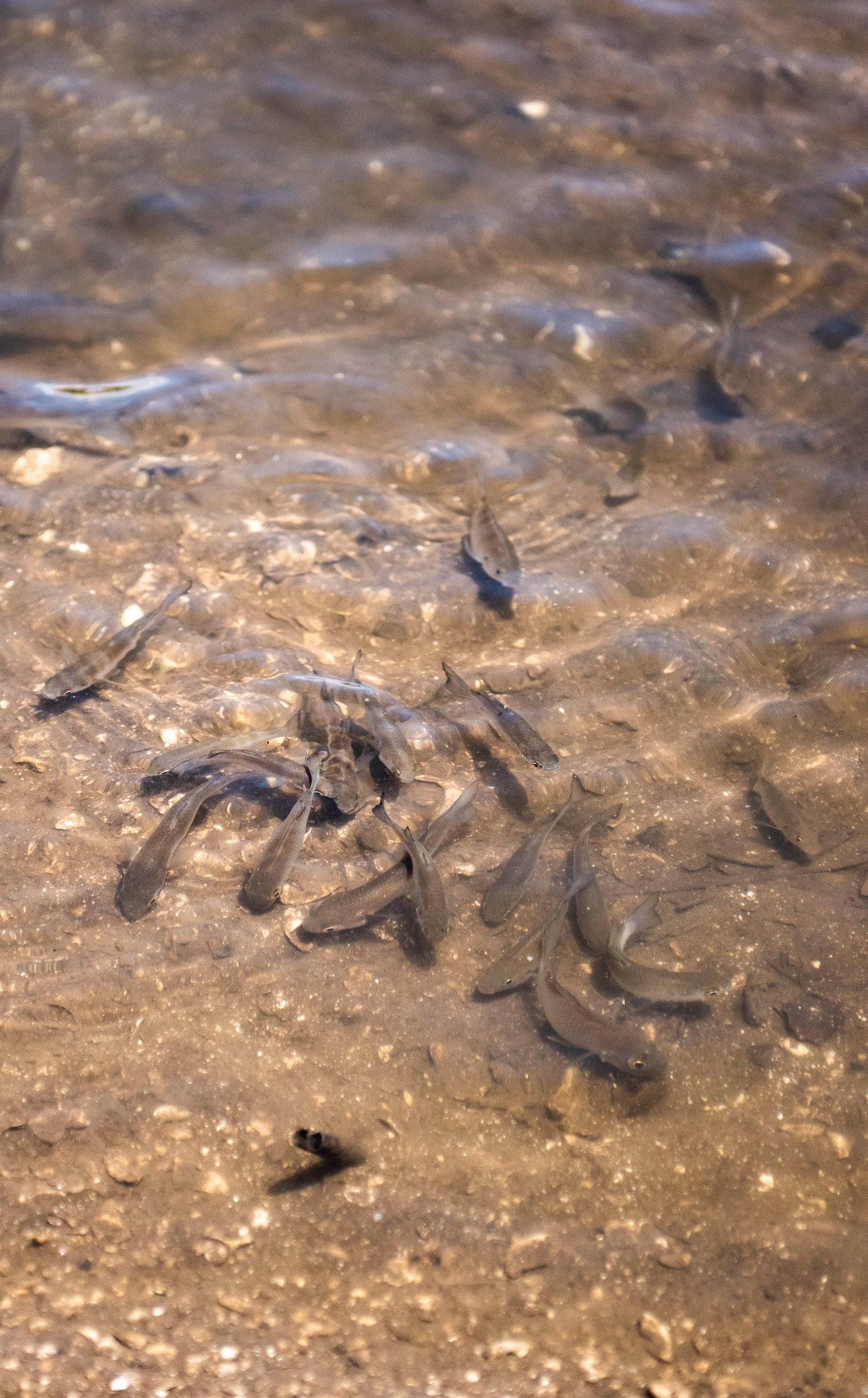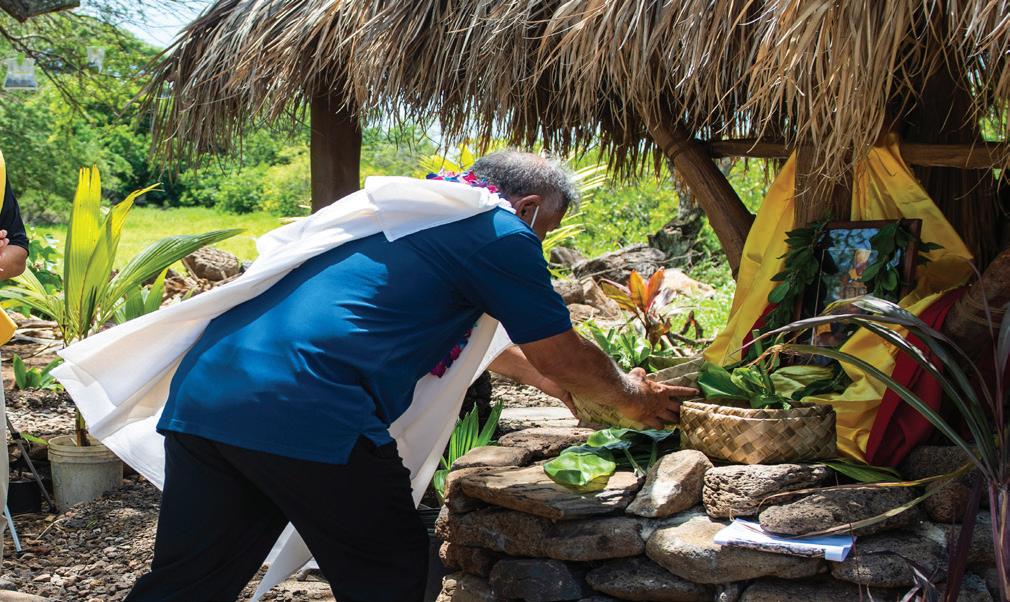
4 minute read
COVER STORY Healing in Pearl Harbor
Hoola Ma Puuloa Healing in Pearl Harbor
Story and photos by MC1 Holly Herline JBPHH Public Affairs
Advertisement
It is said in Hawaiian culture that the hale, or sheltered home-like structure, was one of three things that was necessary for the Hawaiians, along with the canoe and the farm. The hale was for rest and procreation, the canoe for travel and warfare, and the crops for sustenance.
Each of these three necessities could be found at the loko ia, or fishponds, that once lined the Pearl Harbor, or Puuloa, region between the 14th and 19th centuries. These unique Hawaiian inventions were made of a distinctive rock-wall surrounding shallow nearshore reefs that could range in size from a single acre to more than 100 and were intended to farm fish. The early 1900s brought on changes that effectively wiped out practical use of the ancient ponds, while agricultural development filled many of them in, taking with them a piece of the Hawaiian culture. Locally, only three discernable ponds remain to this day. The most accessible pond, Loko Paaiau Fishpond, is currently being restored and returned as closely as possible to its original state.
The Navy, members of Alii Pauahi Hawaiian Civic Club and community volunteers gathered at Loko Paaiau located near McGrew Point military housing, March 26, to bless the newest addition to the restoration, a covered structure named Hale Alii o Na Koa, or Royal House of the Warriors.

Photo by MC1 Holly Herline

Photo by MC1 Holly Herline

Photo by MC1 Holly Herline

Photo by MC1 Holly Herline
The blessing of the hale was dedicated to Prince Jonah Kuhio Kalanianaole as the celebration fell on his 150th birthday. It was only fitting as he was a true steward of the land and people of Hawaii. His legacy lives on in the Hawaiian Civic Club he helped found in 1918 that remains active today and an instrumental part of this restoration project.
The project that started in 2015, between the Navy and Alii Pauahi Hawaiian Civic Club, began with the clearing of invasive mangrove to uncover the fishpond. Recent progress at the pond has centered around maintaining the cleared land, rebuilding the wall that encloses the fishpond, and most recently this hale.
Rear Adm. Robb Chadwick, commander, Navy Region Hawaii and Naval Surface Group Middle Pacific, and Capt. James G. Meyer, commanding officer of Naval Facilities Engineering Command (NAVFAC) Hawaii, were in attendance and have been integral driving forces behind the Navy’s involvement and prioritization in the project. Both offered traditional hookupu, or offerings, during the blessing portion of the ceremony. Chadwick noted the teamwork it has taken to get to this point in the restoration process.
“The Navy has been an integral part of this community and it is not something that we take for granted,” said Chadwick. “This project has far surpassed my expectations of what I thought it was going to be. When you walk the area and along the sea rock, you get an immense sense of the amount of work that goes into it. It’s an impressive effort.”
Made by hand and without any screws, nuts, or nails, it is as culturally traditional as possible while adhering to modern standards. The difference comes in this hale’s purpose; historically it would be used to house the guardian and maintainer of the pond. This one is dedicated to healing, relaxation, and meditation.
“This will be a resting place for fallen warriors and veterans,” said Francis Sinenci, lead builder and Vietnam veteran. “Me being a retiree, I built this to honor our wounded warriors and those with war related issues.”
As restoration and preservation of the fishpond continues, it is clear that veterans are not the only ones who will benefit from the healing intentions of this structure and surrounding area.
The overall project has brought healing to the land. The end goal of the restoration will be to have a fully functional fishpond restored closely to its original state when it was created more than 400 years ago.
“It is so easy for all of us to lose culture, not just Hawaiians,” said Kehaulani Lum, Alii Pauahi Hawaiian Civic Club president. “You can lose, just in one generation, the wisdom that your ancestors have passed on for more than hundreds of years. That applies to us, and maybe even more so because we have had limited access to our original aina, or land.”
Functional return of the fishpond will bring with it a chance for native Hawaiians to learn about a piece of their culture that they were once only able to hear about. Future generations will be able to physically visit a place of their ancestors and participate in the fishing practices they once utilized.
Although the completed pond and hale will be an invaluable resource for gathering and teaching historical and cultural information, the learning has already started. As volunteers from the military, local community and school groups come together, they are learning about each other.
“This is an avenue to get to know each other, solve issues, hear each other’s struggles and gain trust in one another,” said Jeff Pantaleo, NAVFAC Hawaii archeologist and restoration planner. “This started out as healing the fishpond and it became healing between the native Hawaiians and the Navy. This is truly a community restoration.”






